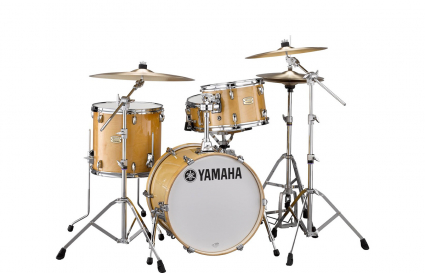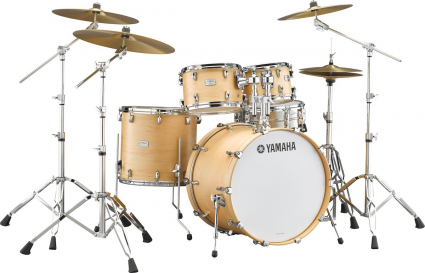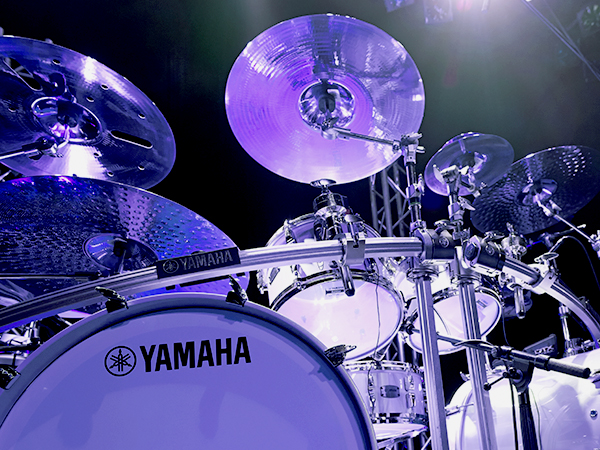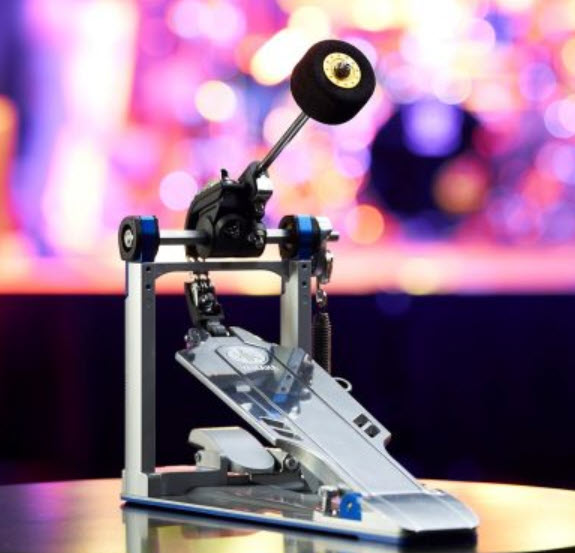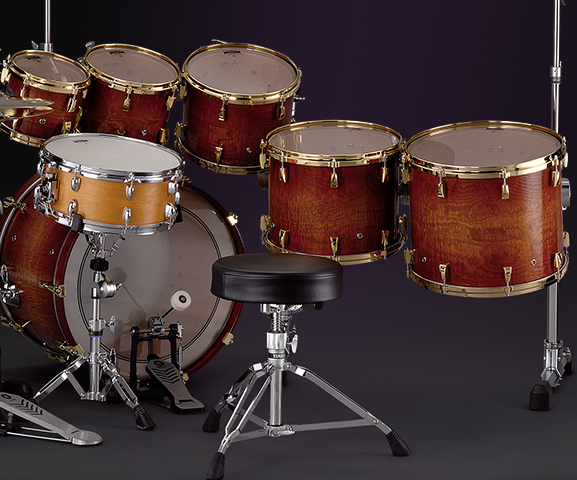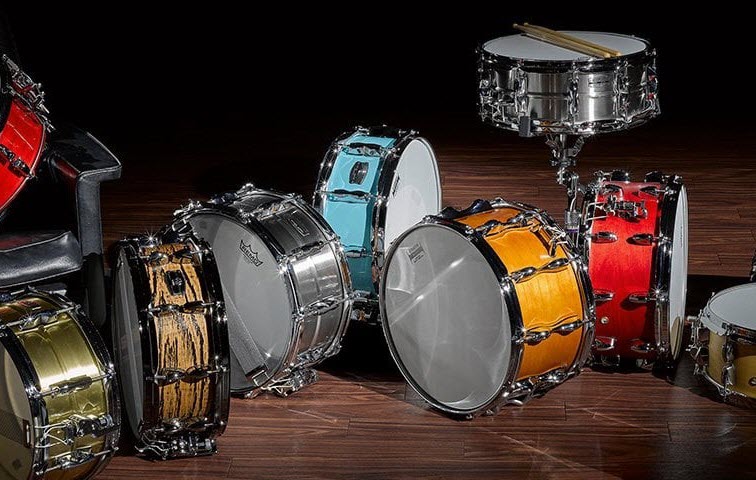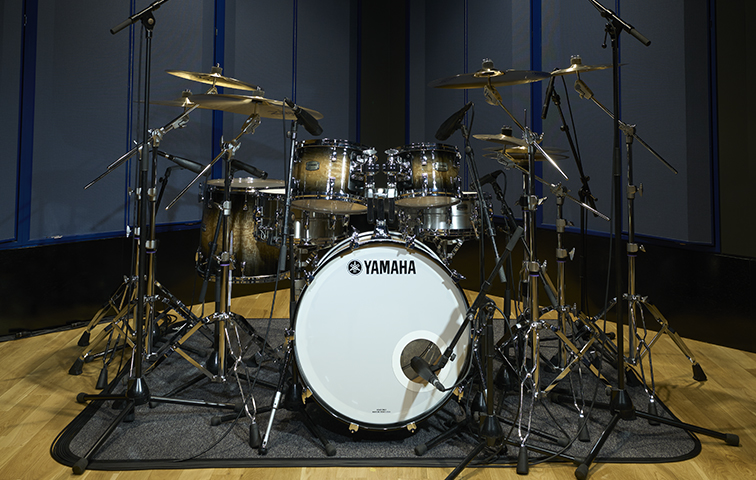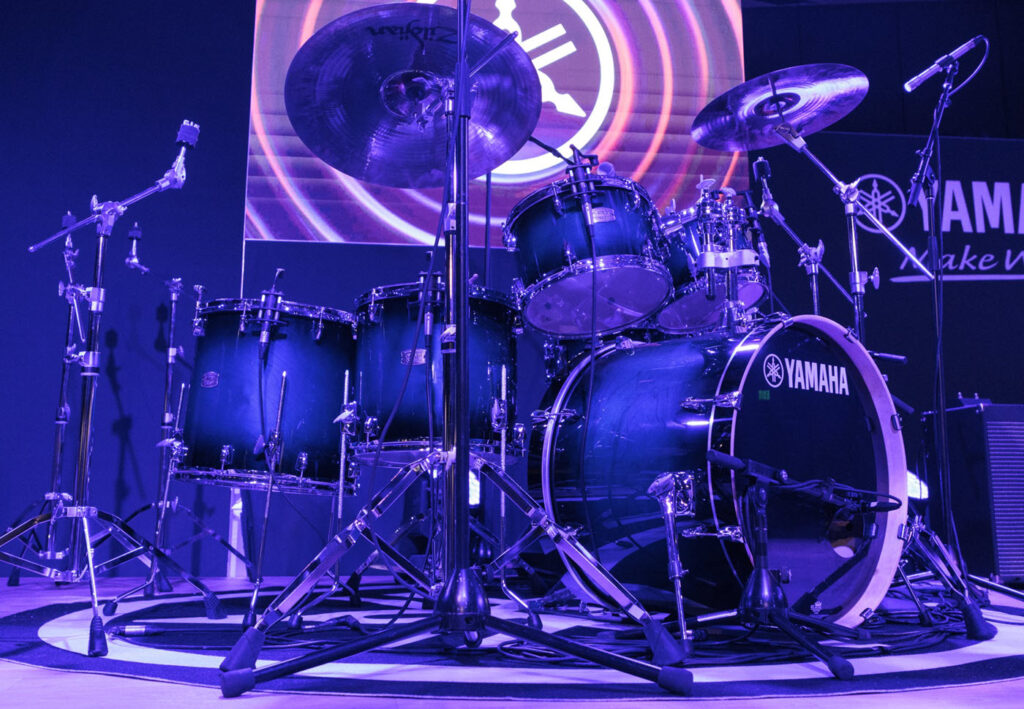The Modern Drum Set, Part 2: The Bass Drum
Adding some boom to the room.
In this multi-part series, we take a closeup look at each of the components of the modern drum set.
In The Modern Drum Set, Part 1, we learned about the origins of the snare drum and how it became an important part of contemporary music. In this installment, we’ll take a look at the Big Daddy of Bottom End, the bass drum. Also known as a “kick” drum, the bass drum is usually the largest drum in a set and the only one played with a foot pedal. It typically sits on the floor, laid on its side, with the front head facing the audience.
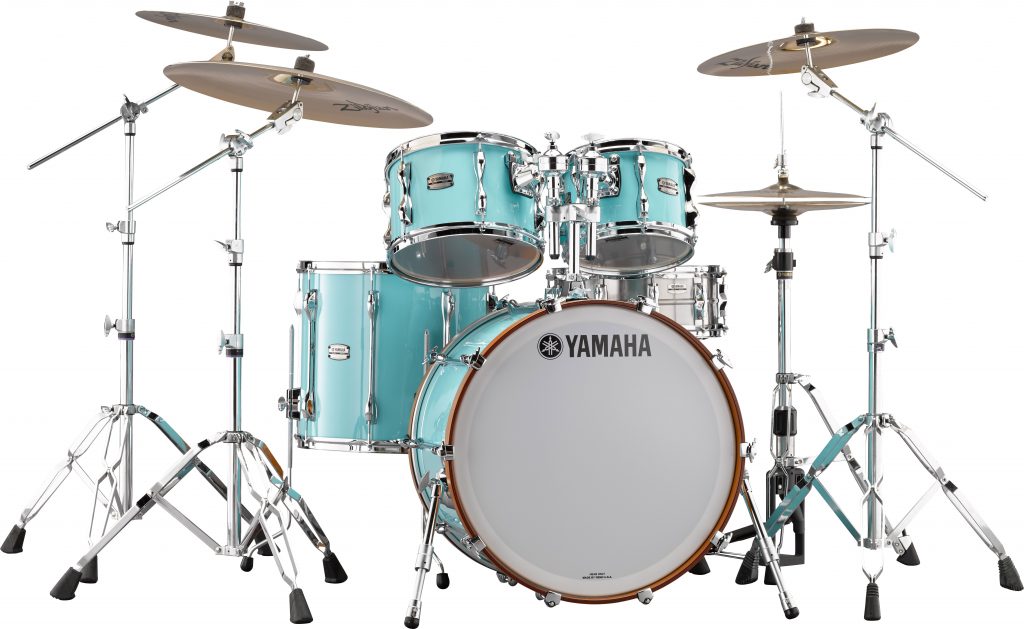
Bass drums are used in just about every musical style, from jazz and classical to death metal — though they are used differently depending upon the genre. In contemporary music, the bass and snare drums are the most important components of the drum set, with the bass drum providing the “downbeat” on the one and three while the snare drum counters on the two and four. In jazz, the bass drum is often played very lightly to provide a pulse that is more felt than heard, but is also used to drop “bombs” (strong accents). In classical music, the bass drum provides dramatic thunder, and marching bands use it as a means of setting the tempo of the march.
Bass-ic History
The bass drum is a descendant of the davul or tabl turki (Turkish drum) dating back to the 1300s, making it one of the oldest percussion instruments. The davul was a double-headed, rope-tensioned drum with a diameter of 26 to 28 inches and was played with a wood stick or by hand. It was used by Ottoman military bands, but was also an important part of non-military music in that part of the world.
In the 18th century, Turkish troops and military bands made their way into Europe, where the davul was incorporated into music written by Gluck, Mozart and Haydn. Eventually, composers such as Berlioz and Verdi used the bass drum in their works, and it became an important part of the orchestral percussion section.
At the beginning of the 20th century, the invention of the foot pedal revolutionized drumming by making it possible for one drummer to simultaneously play a bass drum, a snare drum and a cymbal. The idea of having a single drummer in a band spread from the Big Band era and continues today — though there have been popular bands with two drummers simultaneously playing separate kits.
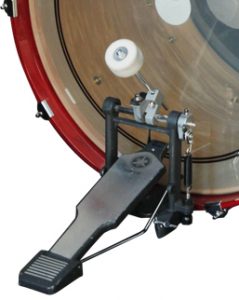
Construction Boom
Bass drum shells are typically constructed from multiple plies of wood such as birch, oak or maple. They can also be made from fiberglass, stainless steel and acrylic, but wood is by far the most popular material.
Birch is used to manufacture shells for Yamaha Recording Custom and Stage Custom drums. It emphasizes the low and high frequencies, providing a bright, lively sound with slightly reduced mid frequencies. Birch projects very well and can easily cut through a mix.
Maple is a very popular wood for making drum shells and is used in Yamaha Absolute Hybrid Maple and Tour Custom drums. It yields a warm low end, balanced low and high frequencies, and slightly boosted mid frequencies. Absolute Hybrid Maple shells use an interior layer of wenge, a hard and heavy type of wood that combines with maple to produce a rich, clear tone at all dynamic levels.
Oak, used in Yamaha Live Custom Hybrid Oak drums, produces a round tone, mellow highs and an extended, warm low end with plenty of volume and projection. Live Custom Hybrid Oak shells are made from a sandwich of oak plies surrounding a dense phenolic layer — a design that emphasizes attack while increasing the drum’s dynamic range. In addition, weights studded in the bass drum at the lug points attenuate low-mid frequencies for a tight, focused sound.
Yamaha PHX (pronounced “phoenix”) drum shells are made from plies of jatoba, kapur and North American maple woods. This unique construction maximizes projection and increases the vibration of the drum head.
Unlike snare drum and tom hoops, bass drum hoops are made from wood and use “claws” or “hooks” to hold the hoop onto the drum. The tension rods used with these claws can have T-handles to facilitate tuning or can be adjusted with a drum key.
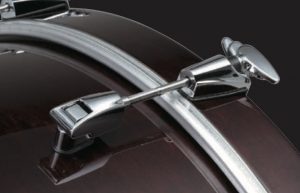
What’s Your Size?
As is the case with any drum, the fundamental pitch of a bass drum is determined by the diameter and depth of the shell: larger and deeper shells generally produce a lower pitch. Deeper shells also provide increased projection, produce more overtones and add extra “boom” to the sound. In general, shallow shells respond faster and can produce a lighter sound.
Bass drums designed for use in drum sets come in a variety of diameters ranging from 18 to 26 inches, with average depths from 14 to 18 inches. Marching bass drums can be significantly larger, and the bass drums in some compact drum sets feature narrower depths. For example, the new Yamaha Stage Custom Hip bass drum has a depth of only 8 inches, making it easier to transport.
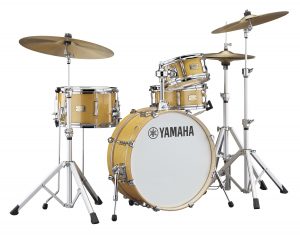
Shell diameters of 18 and 20 inches are popular for jazz, while diameters of 22 and 24 inches are standard for just about every other genre of music (though some heavy metal drummers prefer 26-inch bass drums for their extra low end). Using a bass drum with a large diameter means that your rack toms must be placed higher, so make sure you can get the toms where you want them before you commit to the bass drum size.
How to Avoid Creep’n’Roll
In addition to lugs, claws or hoops, bass drum shells often have extra hardware mounted on them. Legs or “spurs” attached to each side of the shell serve two purposes: They prevent the drum from creeping away from the player every time the pedal beater hits the head, and also help stabilize the drum so that it doesn’t roll from side to side. Some bass drum legs feature convertible tips, with rubber for use on hard floors and spiked ones for use on carpet.
The bass drum also has the important job of supporting the toms, so many come equipped with brackets mounted at the top of the shell, such as the ones used on Yamaha Live Custom Hybrid Oak drums:
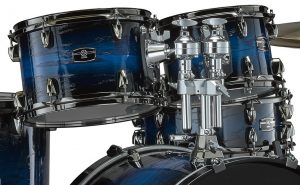
These mounts usually accept a holder for one or two toms, but can also be used to mount cymbal holders. The tom holder is important because it’s the only way to mount two toms centered over the bass drum.
There’s a Hole in My Head!
Many drummers like to cut a hole in the front head of the bass drum, which increases the impact of the sound while at the same time making it easy to place a small blanket or pillow inside to dampen the drum’s resonance. A hole also facilitates microphone placement, and that’s important in situations where the drums are being recorded or amplified through a PA system. Jazz drummers, however, often prefer a pure tone and generally do not opt for a hole or any dampening inside the drum.

The bass drum is an important part of your drum set in terms of both the sound and the physical arrangement of the kit. A bit of planning and a visit to your local music shop can help ensure that you choose the right one.
Click here for Part 1: The snare drum.
Click here for Part 3: Toms.
Click here for Part 4: Foot pedals.
Click here for more information about Yamaha acoustic drum sets.











